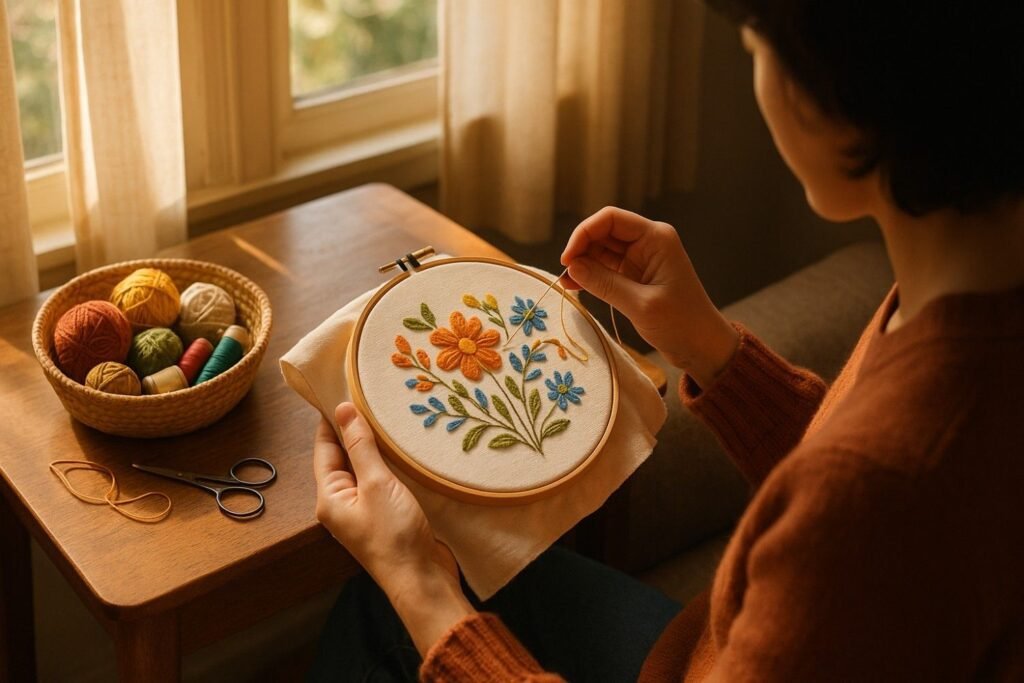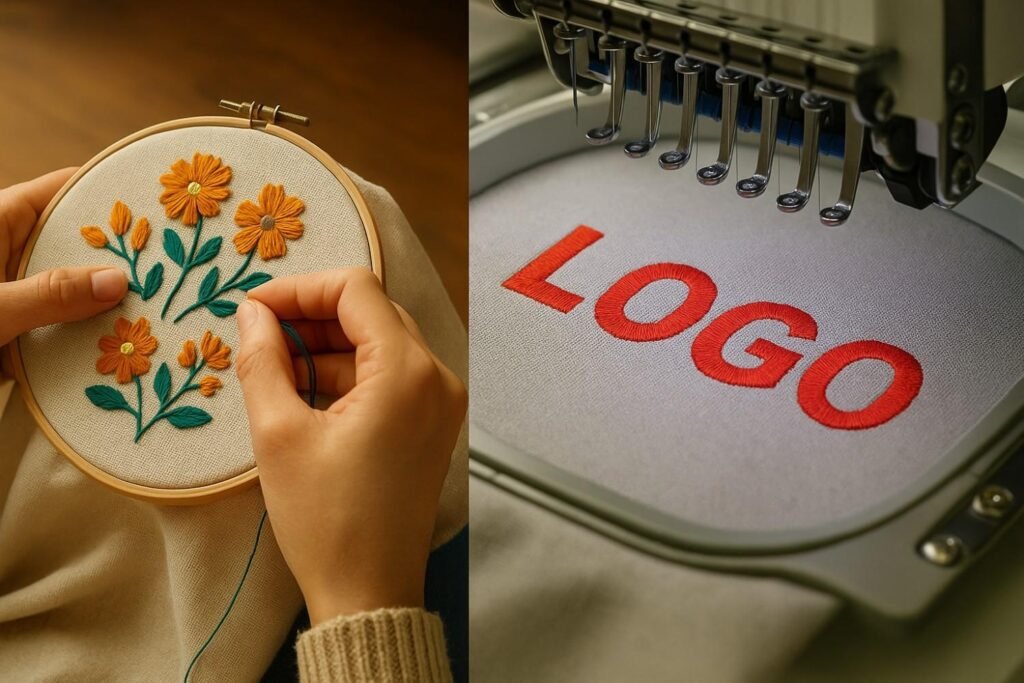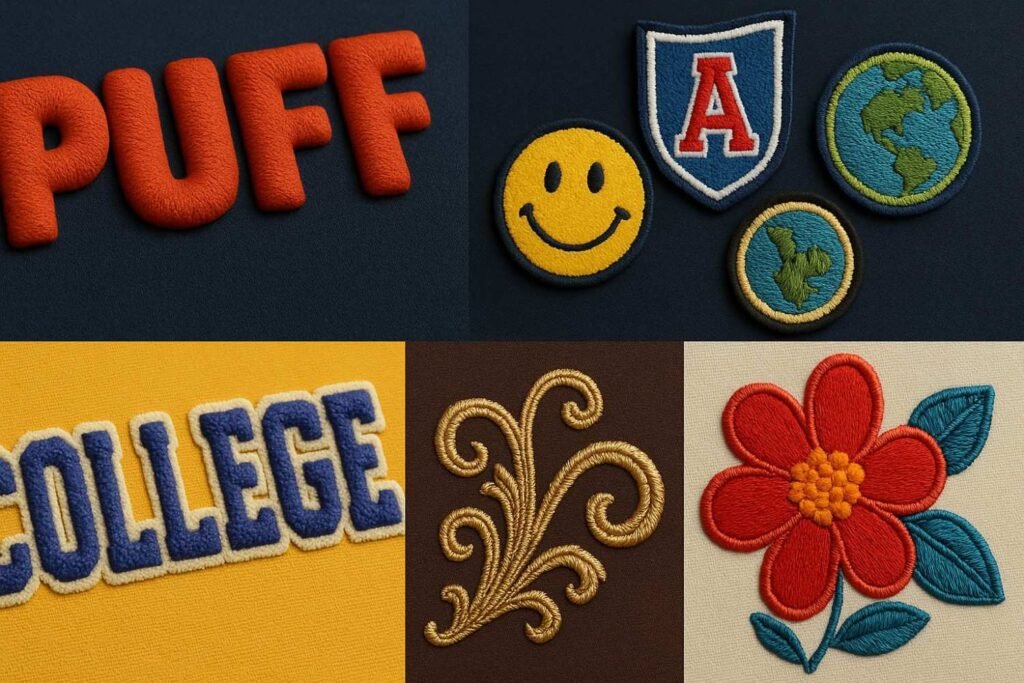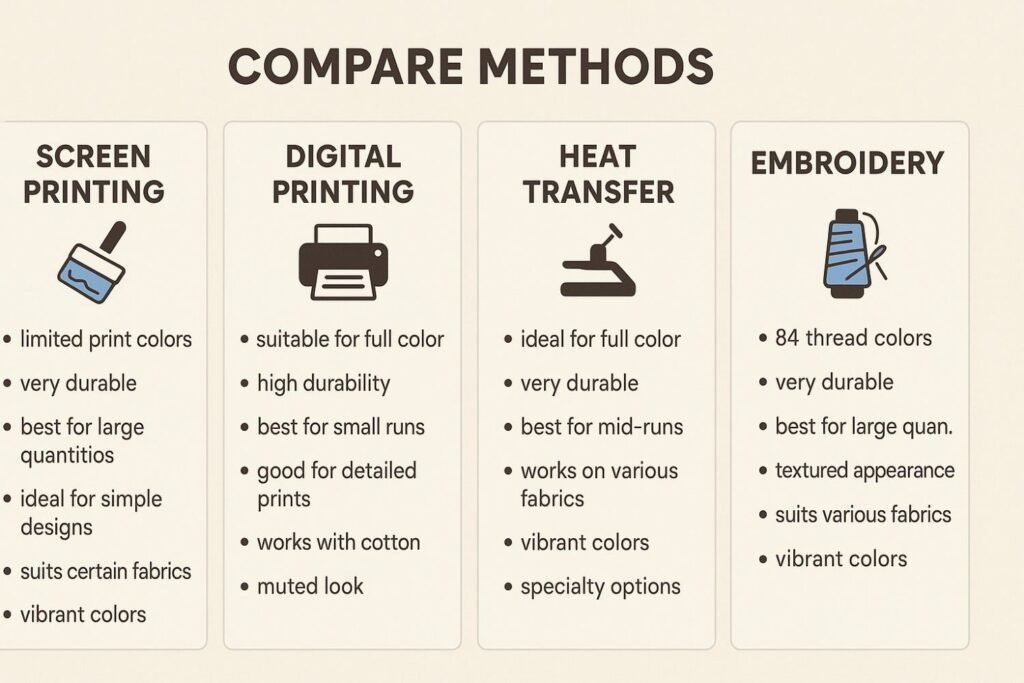Introduction
When I first tried embroidery, I was amazed by how this art of stitching could transform simple fabric into something special. Whether done by hand or machine, it lets you bring unique designs to life on everyday materials. With today’s print on demand services, anyone can create embroidered products without needing heavy equipment or a big investment. This means more room for creativity and less worry about inventory—a balance I personally found inspiring when I stitched my first piece with colorful thread, yarn, and a needle.

Embroidery Techniques
From foundational stitches like the running stitch, blanket stitch, and cross stitch to advanced machine embroidery, the options are endless. I still enjoy hand embroidery for its calm, steady rhythm, but I also admire how computerized sewing machines can scale up intricate designs quickly. These machines make it easy to produce detailed work on golf shirts, hats, or dress shirts. At GAMBITMFG, for example, I’ve seen how both approaches—handcrafted care and modern efficiency—blend beautifully to create pieces that truly stand out.

I’ve always admired embroidery as a timeless handicraft that uses a needle and thread to decorate plain fabric. Through careful stitching, it creates patterns with yarn, beads, sequins, or even pearls, giving everyday items texture, color, and a touch of pizzazz. You’ll often spot it in a logo stitched onto a gym bag, or a monogram on a hotel towel—small details that instantly elevate simple surfaces.
Enduring Value
For thousands of years, embroidery has stayed both beautiful and durable, passing through cultures with evolving tools and techniques. While methods have evolved, the basic stitches still remain the same. Whether I’m practicing the classics or exploring new ideas, embroidery connects tradition with modern style, proving that a craft rooted in patience and skill never loses its charm.
How does Embroidery Work?
Step 1: Prepare the Artwork
The process begins with the artwork, where a designer often digitizes the design or transfers it onto the fabric using a stencil. This ensures every stitch has a clear guide, making the foundation precise and ready for embroidery.
Step 2: Stabilize and Hoop
Next comes the step to stabilize the material. You place the fabric in a hoop, clamp it tightly within a frame, and add backing so the stitches stay crisp even on stretchy clothing. Using the right support—like cut-away for knits or tear-away for wovens—with a proper stabilizer prevents puckering before it happens.
Step 3: Stitch and Finish
Finally, you stitch and finish the design by applying thread either by hand or machine. Afterward, you trim any tails, press the piece so the intricate designs stand out, and add a touch of steam to relax the fibres. This makes the colors bloom, leaving a polished, ready-to-wear look that highlights both skill and detail.
What is Embroidery Used For?
Stylish Apparel
Embroidery transforms everyday basics like dress shirts, tote bags, golf shirts, denim jackets, beanies, and hats into unique conversation pieces. With a satin stitch monogram, a bold back panel design, or a stitched logo, items gain rich color, a raised textured finish, and true craftsmanship. From cafés to sports teams and corporate swag kits, embroidery makes products stand out in ways that simple print cannot match.
Decor and Gifts
From cushion covers and lampshades to personalized towels, baby onesies, and wedding handkerchiefs, embroidery adds stitched motifs that bring a handmade feel to special items.
Gallery-worthy Textile Art
Artists use embroidery as brushstrokes, building 3D landscapes with thread, beads, gems, and other objects, turning textiles into true works of art.
Types of Embroidery
- Hand embroidery is the classic original method, built on core stitches like running stitch, back stitch, blanket stitch, chain stitch, satin stitch, and cross stitch. These techniques date back to medieval times and remain popular today as a calming hobby for those who love to embroider in a relaxing way.
- Machine embroidery uses computerized sewing machines with multiple needles to complete complex designs quickly. Companies like GAMBITMFG use advanced rigs to stitch products such as hats, cotton canvas totes, and jackets. This time-saving option supports embroidery businesses and works for everything from t-shirts and golf shirts to dad caps, eco tote bags, and more. With artistic expression and sustainability in mind, this approach helps produce premium flair with functional canvas products.
- Specialized and traditional embroidery styles include Kutch embroidery from Gujarat, India, with mirrors, silk chain stitch, and bright palettes; Hardanger from Norway, with counted thread, drawn thread, and geometric designs; Crewel work from England, using wool threads to create stylized floral motifs; and Canvas work/needlepoint, a global style using yarn and open-weave canvas for geometric or pictorial patterns. Each showcases decorative stitches such as cutwork, stem stitch, French knots, tent, and basketweave to deliver a dense, textured finish.
Embroidery Options
Modern embroidery comes in many forms, from flat embroidery with intricate designs and popular embellishment effects, to 3D puff embroidery that adds foam for a three-dimensional surface. Embroidered patches on fabric backing with thread or adhesive sleeves are also common. Metallic threads made from synthetic polyester create 2D pictures that look metallic, while chenille embroidery uses loop stitches with wool, cotton, or acrylic yarns for a unique texture. Tackle twill (applique) involves sewing down a number or letter cut from one material and applying it to another, perfect for logos, text, and large garment surfaces.

What is Custom Embroidery?
Custom embroidery lets you personalize fabric items like hats, bags, and jackets with stitched designs. This artistic technique uses threads to create images, logos, names, and phrases for bespoke merchandise. Each customer can request personalized colors, sizes, placements, and details. With on-demand production, small businesses and designers can avoid waste, make prototypes, or scale to bulk shirts. It offers creative control, blending artistry and functionality into long-lasting style and craftsmanship.
Why Sell Custom Embroidery?
The premium appeal of embroidery adds a professional, high-quality finish to products like apparel, hats, and bags, raising their value and attractiveness. Its broad market reach spans businesses, sports teams, schools, and individuals seeking personalized branded items. With durable appearance even after washing, embroidery allows creative flexibility for logos, patterns, and endless customization. Sellers enjoy higher profits and strong branding opportunities, building exclusive brand identities while meeting the growing demand for personalization in gifts, promotions, and personal use.

How to Sell Embroidered Clothing Online?
Turning stitching into income is easier with a partner like GambitMFG, which handles machines, inventory, and shipping. You simply upload artwork, and orders are fulfilled directly for your customers, reducing costs and stock risks while allowing custom requests. Focus on your niche market—from chinchilla owners and roller derby squads to coffee house employees—and sell via platforms like Shopify, Etsy, or TikTok Shop. Create embroidery designs using resources, guides, and files, then price for profit (around a 40% margin). Launch with small batches, gather feedback, and adapt through social media polls to test colorways or styles. With print-on-demand, you can explore craft and art on fabric without upfront risk, making golf shirts, denim jackets, and decor ready for market.
Price Factors
The price of embroidery depends on the garment and product type, with inexpensive, mid-range, and high-end styles available beyond just t-shirts. Larger quantity orders reduce costs thanks to setup break points, while multiple print locations like front and back imprints increase costs. The in-hands date also matters—on-demand garments needed in a few days cost more than those scheduled weeks out.
Embroidery FAQ
- What is embroidery vs sewing?
- Sewing connects pieces of fabric to create or repair garments, while embroidery is used to decorate fabric or garments with decorative stitches such as cross stitch, chain stitch, running stitch, and other techniques.
- What best describes embroidery?
- Embroidery is a form of artistic expression that applies thread or yarn with a needle to embellish fabric or other materials. It often incorporates beads, sequins, and other details to transform fabric into beautiful, personalized art. From golf shirts and denim hats to household items, embroidery adds a unique touch.
- Is embroidery easy for beginners?
- Yes, embroidery is beginner-friendly. Basic stitches such as the running stitch, blanket stitch, and cross stitch are easy to learn. Step-by-step YouTube tutorials also provide a great way to practice and explore embroidery as part of textile crafts.
- What is the cost of custom embroidery?
- The cost of custom embroidery depends on the size and complexity of the design. For pricing, please contact GAMBITMFG for a personalized quote.
- What are the advantages of embroidery?
- Embroidery offers exceptional durability, a polished appearance, and detailed customization. Its textured feel, versatility across different fabrics, and easy maintenance make it a popular choice. Embroidery also supports brand recognition, has timeless appeal, and adds unique, valuable personalization to any item.
- How can I get help with my embroidered t-shirt design?
- We provide expert design assistance for embroidered T-shirts. Our dedicated team will guide you through the creative process, offering personalized support, design ideas, adjustments, and help with specific requests to bring your vision to life.
- How do I wash an embroidered shirt?
- To wash an embroidered shirt, turn it inside out and use a gentle cycle with cold water. Avoid bleach, and choose a mild detergent. After washing, reshape the garment and air dry it to maintain the quality of the design. Following these steps helps keep your shirt vibrant and in excellent condition.
